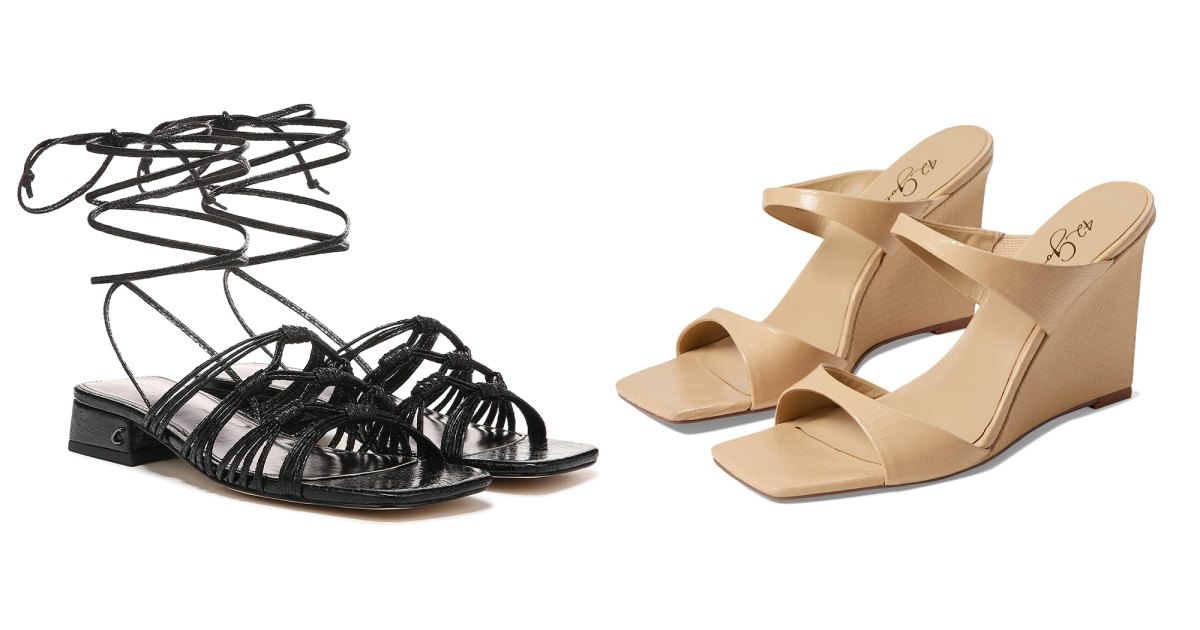Culture
Arlene Shechet’s ‘Girl Group’ Nudges the Heavy Metal Men at Storm King

The recent late-life critical embrace of a generation of underappreciated major female artists — the 91-year-old nude self-portraitist Joan Semmel, the 84-year-old visual artist and sculptor Barbara Chase-Riboud, the 87-year-old performance and multimedia provocateur Joan Jonas and the Cuban-born abstractionist Carmen Herrera, who died two years ago at age 106 — has brought a measure of satisfaction to the sculptor Arlene Shechet.
Also, a good bit of eye rolling.
“C’mon now, Carmen had to get to her 90s before people cared,” she says, standing in her roughly 5,000-square-foot Kingston studio, about two hours north of New York City, on a rainy late spring morning, attired in her usual work garb of a knitted cap and an indigo Japanese frock coat now used as a smock, flecked with clay dust and wood chips. “Everyone says ‘Oh, isn’t it so great that these women are getting their due?’ Actually, when you think about it, it’s pretty horrifying.”
The 75-year-old Shechet — bemused, kinetic, indomitable — is not in danger of having to wait to be recognized, but you might not realize that, given the furious pace at which she continues to make art. Although she spent the early years of her career teaching at her alma mater, the Rhode Island School of Design, and at Parsons, and raising two children, now in their 30s, in an 1866 building in TriBeCa, continuing to sculpt in a basement studio after their bedtime, she has made up for lost time.
Since the mid-1990s, her vast output, in a range of materials, often in combination, including wood, metal, paper and concrete, but especially ceramic, which she is widely credited as having helped lifted out of the decorative arts doldrums, has been rhapsodically reviewed. She has had solo shows at Washington’s Phillips Collection, at Boston’s Institute of Contemporary Art and at the Frick, where she added her own slyly subversive works as a foil to the museum’s Meissen porcelain collection. For the past seven years, as her pieces have grown steadily larger, she has been represented by the global behemoth Pace (her smaller works command between $90,000 and $120,000). In 2018 she made her public art debut in Manhattan’s Madison Square Park, presenting an outdoor gathering space, based on her grandparents’ sunken living room in the Bronx.
Next week, she will likely reach a career crescendo, doing something she has never done before. “Girl Group,” an exhibition of six monumental welded sculptures in steel and aluminum, each painted in supersaturated shades, will debut on May 4 in the vast rolling landscape of Storm King Art Center, the 500-acre Hudson Valley sculpture park that is considered among the world’s most important commissions. Some of Shechet’s sculptures are 20 feet tall, others 30 feet long, far larger than anything she has ever attempted.
“Part of why we were confident that she would be able to do this was that she’s always been so intensely involved in process, so hands-on, that we were sure she could execute something so ambitious,” said Eric Booker, who organized the show with Storm King’s artistic director and chief curator, Nora Lawrence. She called it “Girl Group” to emphasize that it is a chorus of works, but the title also alludes to the badass rock girl groups of yore.
The process from conception took three years to complete, with the pieces fabricated in various workshops upstate because no single operation in the area could fit them at once. On display inside the park’s 1935 Normandy-style museum building will be corresponding ceramic-and-steel works, torso-size and lavishly textured and hued, which Shechet completed during the pandemic; they provided what she calls “the creative seed” for each of the outdoor constructions. The exhibition runs until November, though if Storm King decides to do so, one of the large-scale sculptures could join the permanent collection, taking its place alongside pieces by Alexander Calder, Isamu Noguchi, Anthony Caro, Henry Moore and Mark di Suvero.
Shechet intended for “Girl Group” to nod to Storm King’s midcentury ethos of muscular hand-hammered minimalism set incongruously amid edenic surroundings, but the sculptures also play with the gender assumptions that often accompany works of such size and materials. “I wanted to fit in but I also wanted to stand out,” she says. They stand as well as a comment on the collection itself, which is, like public sculpture, dominated by men.
While recent arrivals like Sarah Sze and Maya Lin, as well as the few earlier female artists, including Louise Nevelson (“City on the High Mountain,” 1983) may have wrestled with the implications of working in such a context, “Girl Group” confronts the issue head-on, in a riotous rebuke to the self-serious, testosterone-jacked nature of monumentality and raw metal. Which isn’t to say that Shechet is hostile to the collection’s inherent machismo. She has lectured on such pioneers as David Smith, the hard-drinking carouser who died in a car accident at age 59 in 1965 and whose brawny works, like “The Iron Woman” (1954-58) were among the first bought for the park by its co-founder Ralph E. Ogden, and she regards the achievement of those years with fondness and wonder: “I love all that stuff,” she says. “I wanted to be respectful but also just nudge it forward.”
First, there are the colors. Instead of the moodily poetic weathering steel favored by Richard Serra in “Schunnemunk Fork,” 1990-91, a series of lengthwise plates burrowed into the hillocks, or the black steel industrial crane hook and steamroller that Di Suvero salvaged to fashion the spiderlike “She,” from 1977-78, Shechet eschews darkness entirely. There have been occasional bits of color at Storm King over the decades, in such pieces as Calder’s candy red “Jerusalem Stabile II” from 1976 but rarely more than a primary hue.
Shechet’s ambiguously titled works, made up of dozens of intricately welded-together shapes, each sport two vivid hand-mixed gradient shades that she chose for the way they interact with each other, highlight the extreme shapes and “call out” to her other works sited nearby. Some are creamy and pastel, others juicily near-fluorescent. To create texture, some of the sections are matte, others glossy, and a few are left in their natural brazen aluminum, absorbent and reflective at once.
“I know that the guys who originally worked here wanted to honor the integrity of the material, and when they did it, it was a thrill to see that black against all the green of nature,” she says, “but I wanted to bring in another kind of integrity.” Such a desire to sharply comment on works by other artists was evident in her intervention at the Frick, said the institution’s director, Ian Wardropper. “When Arlene worked with our Meissen collection, she overturned all our norms,” he recalled. “She put 19th century casts of 18th century animals in the garden and plates like stars on the wall. It wasn’t anything we had let anyone else do.”
Shechet knows she has never been easy to classify in a world where repetition and signature style, as opposed to a promiscuously curious eye, is what excites the art market. “But I can’t work that way. I just have too many enthusiasms.”
Although Storm King has been promoting the show as bringing a feminine aspect to the park, perhaps due to Shechet’s colors, she is baffled by this oversimplification merely because the works are neither rusted nor coal black. “What’s feminine is that I’m a woman, and I’m making huge metal things,” she says.
Unlike many of the other artists here, who came of age, as she did, during Minimalism and post-Minimalism, Shechet doesn’t traffic in the sober drama of uniformity and the symmetrical massing of identical objects in the landscape. There is emotional power, she acknowledges, in a boundless expanse of Donald Judd boxes, and clever high concept behind Sol LeWitt’s “Five Modular Units,” which sits in the grass en route to Storm King’s North Woods, but for her, the Minimalists’ “repetition just devolves into shtick.”
The works in “Girl Group” share a language — swooping curves, unexpected apertures and slits, right angles, tunnels, cones, shieldlike expanses — but each has its own personality, creating a sort of universe of mythical creatures. It’s partly a technological feat; the original welded steel works at Storm King, dating to the ’60s, were basically planes cut or rolled in one or two places. Computer-aided technology for cutting heavy metal has so improved in recent years, Shechet says her sculptures are “almost like a sewn garment, with darts and seams. They can have motion and life.”
One work, “As April,” is a tangled tower in citrus yellow and canary, with strips that fall lyrically to the ground; the 30-foot-long “Midnight,” in shades of coral and mango, seems almost ready to strike. “Rapunzel,” in cobalt and dusty plum, looms like a praying mantis. Like close to a dozen examples among the park’s 92 permanent works and long-term loans on view, they are tough enough to be touched — but Shechet’s sculptures also beg to be stroked, even whispered to.
The cyclonic, hands-on, madly iterative method that she employed for “Girl Group” also stands in contrast with shortcuts used lately by some monumental sculptors who forgo the process of the studio, simply sending a small model or a computer rendering to a fabricator, sometimes overseas, to return as a finished product, by boat. Shechet ceaselessly refined the forms, toggling between analog and digital, making a succession of maquettes that still litter the studio.
She has long worked in such a full-body, instinctual way. With smaller pieces, she often starts by grabbing a hunk of salvaged wood from the floor-to-ceiling stack in the studio, and combining it with metal and clay. She frequently changes direction midstream, tearing things up and reconstituting them, courting the sensation of motion in the finished works; they lurch and loom, with gnarly wedges of tree, slices of metal and glistening jewel-toned glazes that bubble and form flocked crusts. Shechet treats the pedestals she designs as part of the work. Sometimes the sculptures seem on the verge of melting, taking the platforms with them. “I like things to feel alive, that there’s a sense of danger.”
The creation of “Girl Group” cost an estimated $1 million and was financed by sales of her earlier work, along with Pace’s deep pockets and some funds from Storm King. Shechet is no stranger to the staggering cost of public art; she made some of works for her show at Madison Square Park, “Full Steam Ahead,” including huge pillowy-seeming fragments from heavy bathtub-grade porcelain during a seven-month residency at the Kohler Foundation in Wisconsin, endowed by the fixture company.
Through the years of bringing “Girl Group” into the world (one piece, “Bea Blue,” is set to be installed hours before the show opens), Shechet labored on three or four other projects simultaneously in a cacophonous array of mediums. But given the legacy of Storm King, and its manly, heavy metal milieu, she knew what she was looking for in taking on so gargantuan a project.
“I’m looking for awe,” she says, “but not just awe. I’m looking for joy.”





















